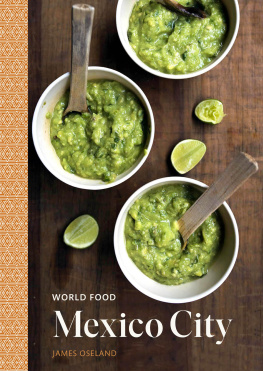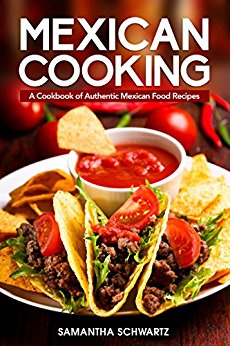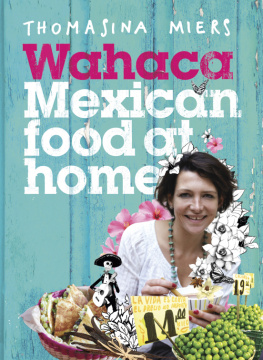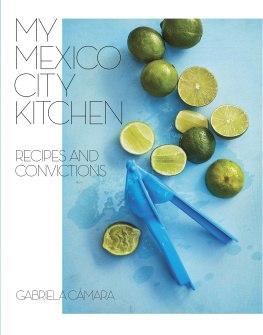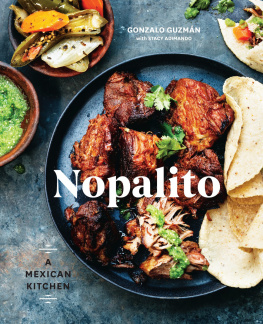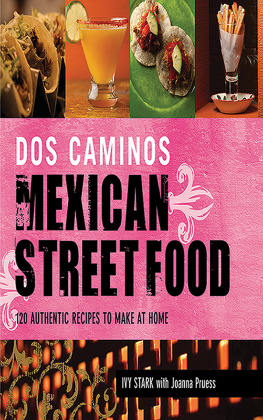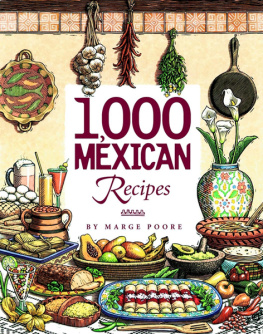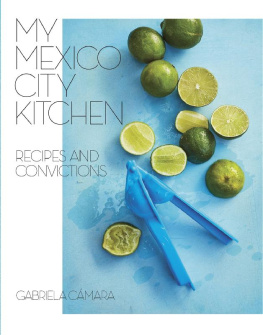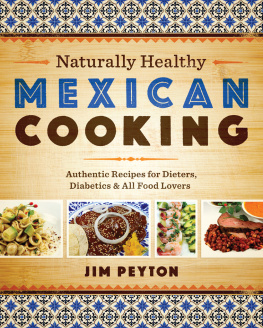Contents
Landmarks
Print Page List
Acknowledgments
Many people helped in the making of this book, the premiere volume of World Food. In particular, I would like to express my gratitude to Jill Goodman for her wisdom and guidance; Doe Coover, my agent, for her belief in World Food; and Hannah Rahill, my publisher, for her insightful support. I would also like to thank Mennlay Aggrey; Betsy Andrews; Mario Aranda; Massimo Audiello; Robin Brewer; Javier Cabral; Casa Jacaranda cooking school (Alberto Esta and Jorge Fitz); Jesus Chairez; Mario Martnez Chvez; Vivian Cohen and her family; Beatriz de la Rosa; Naomi Duguid; Ernesto Silvio Escobar; Vernica Snchez Flix; Itzia Fernndez; Alam Mndez Florin; Alma Galindo and her family; Nicholas Gilman; Jos de Jess Len Hernndez; Victoria Hernndez and her family; Amanda Hesser; Jim Johnston; Beth Kracklauer; La Comida Chiva; La Salvacin Caf; Mana Le Marchand; Mnica Casanova; Ricardo Regules Garca; Merrie Lawson; Erin Lewis; scar Luviano; Josue Macias; Daniel Manrique; Karla Marin; Rachel Markowitz; Rita Marmor; David McAninch; Estella Mejido; Gabriela Damin Miravete and her family; Andrea Nguyen; Iliana Nieto; Martha Ortiz; Gustavo Orube; Victoria Orube; Julie Oseland; Alvany Padilla; Michael Parker; Mnica Patio; Sofia Perez; David Plotnikoff; Francine Prose; Yesenia Ruiz; Harris Salat; Rebecca Saletan; Alexis Scott; Margie Schnibbe; Sharon Silva; Thor Stockman; Dave Serwatka; Alex Sustegui; Maddy Sweitzer-Lamme; Leah Tannehill; Sarah Tannehill-Garza; the dedicated team at Ten Speed Press; Tepito Arte Ac; Lesley Tellez; John R. Thompson; Susan Traylor; Naomi Uman; Vernica Velsquez; Vijayan Swami; and Nick Zedd.
James Oseland travels extensively in search ofthe worlds best restaurants, street food stalls,markets, and home cooks. He has been writingabout international cultures and their cuisinesfor decades and was editor-in-chief of Saveur for eight years, where his work garnered manyaccolades from the James Beard Foundation,the International Association of CulinaryProfessionals, and the American Society ofMagazine Editors. His cookbook Cradle ofFlavor was named one of the best books of theyear by the New York Times and Good MorningAmerica. He was also a judge for five years onBravos Top Chef Masters.
WORLD FOOD
Editor and Author James Oseland
Creative Director Dave Weaver
Executive Editor Jenna Leigh Evans
World Food Test Kitchen Director Brenda Nieto
Kitchen Assistants Nora Bergen, Libia Brenda, Esther Guzman, Jeffrey Lan
Researchers Taylor Cannon, Pablo Orube
Mexico City Advisors Nils Bernstein, Libia Brenda, Margot Castaeda, Laura Cohen, Alfredo Gavaldn, David Lida, Cristina Potters, Nadia Santillanes
Bibliography
Bayless, Rick. Authentic Mexican: Regional Cooking from the Heart of Mexico. New York: William Morrow, 1987.
Bayless, Rick. Mexico: One Plate at a Time. New York: Scribner, 2000.
Kandell, Jonathan. La Capital: The Biography of Mexico City. New York: Random House, 1988.
Kennedy, Diana. The Art of Mexican Cooking. New York: Bantam Books, 1989.
Kennedy, Diana. The Cuisines of Mexico. New York: Harper & Row, 1972.
Lida, David. First Stop in the New World: Mexico City, the Capital of the 21st Century. New York: Riverhead Books, 2008.
Novo, Salvador. Cocina mexicana: Historia gastronmica de la ciudad de Mxico. Mexico City: Porrua, 1967.
Quintana, Patricia. The Taste of Mexico. New York: Stewart, Tabori & Chang, 1986.
Rombauer, Irma S., Marion Rombauer Becker, and Ethan Becker. Joy of Cooking. New York: Scribner, 1997.
Food from Hearth and Heart
Introduction
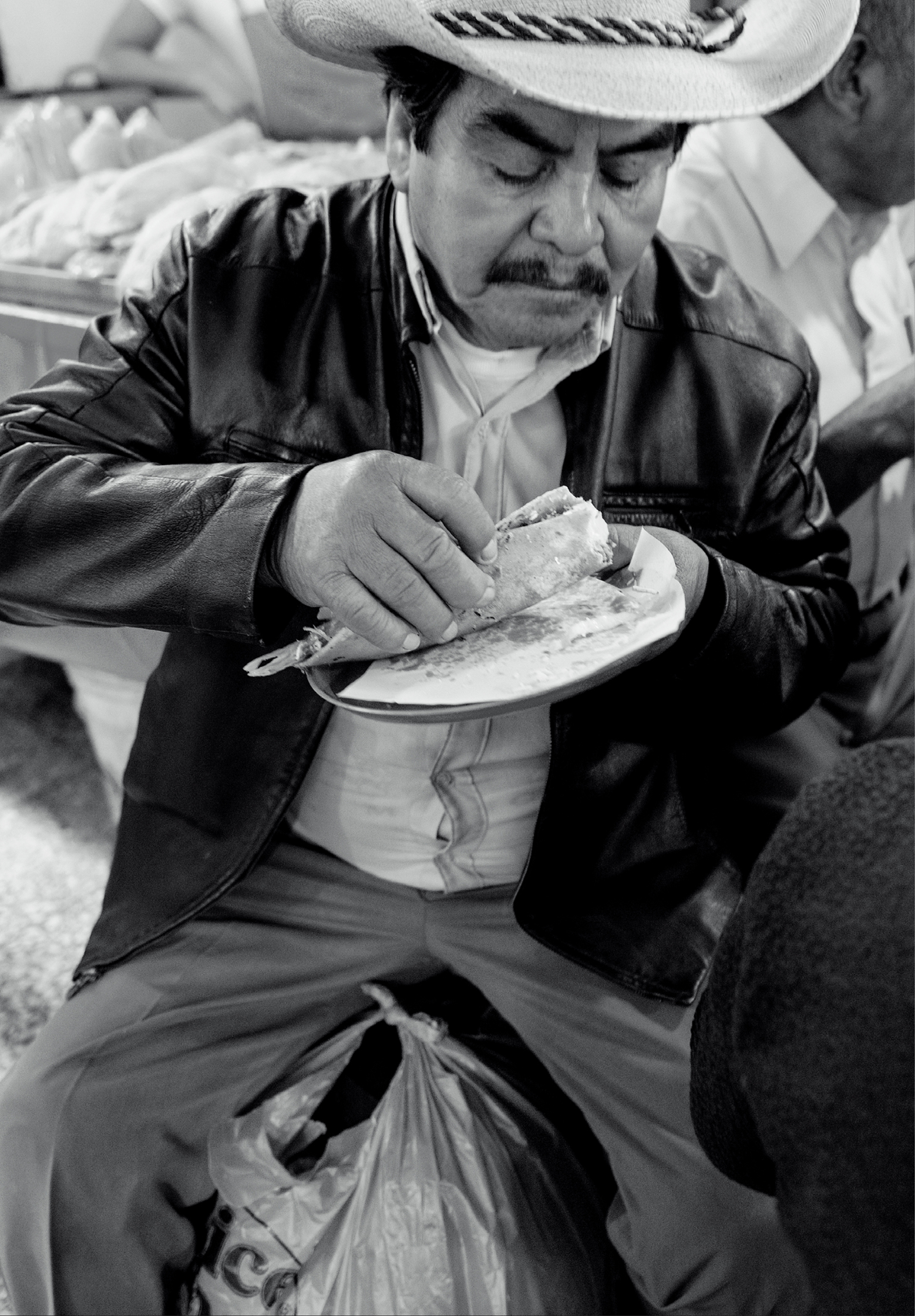
A customer enjoys a taco in La Merced Market.
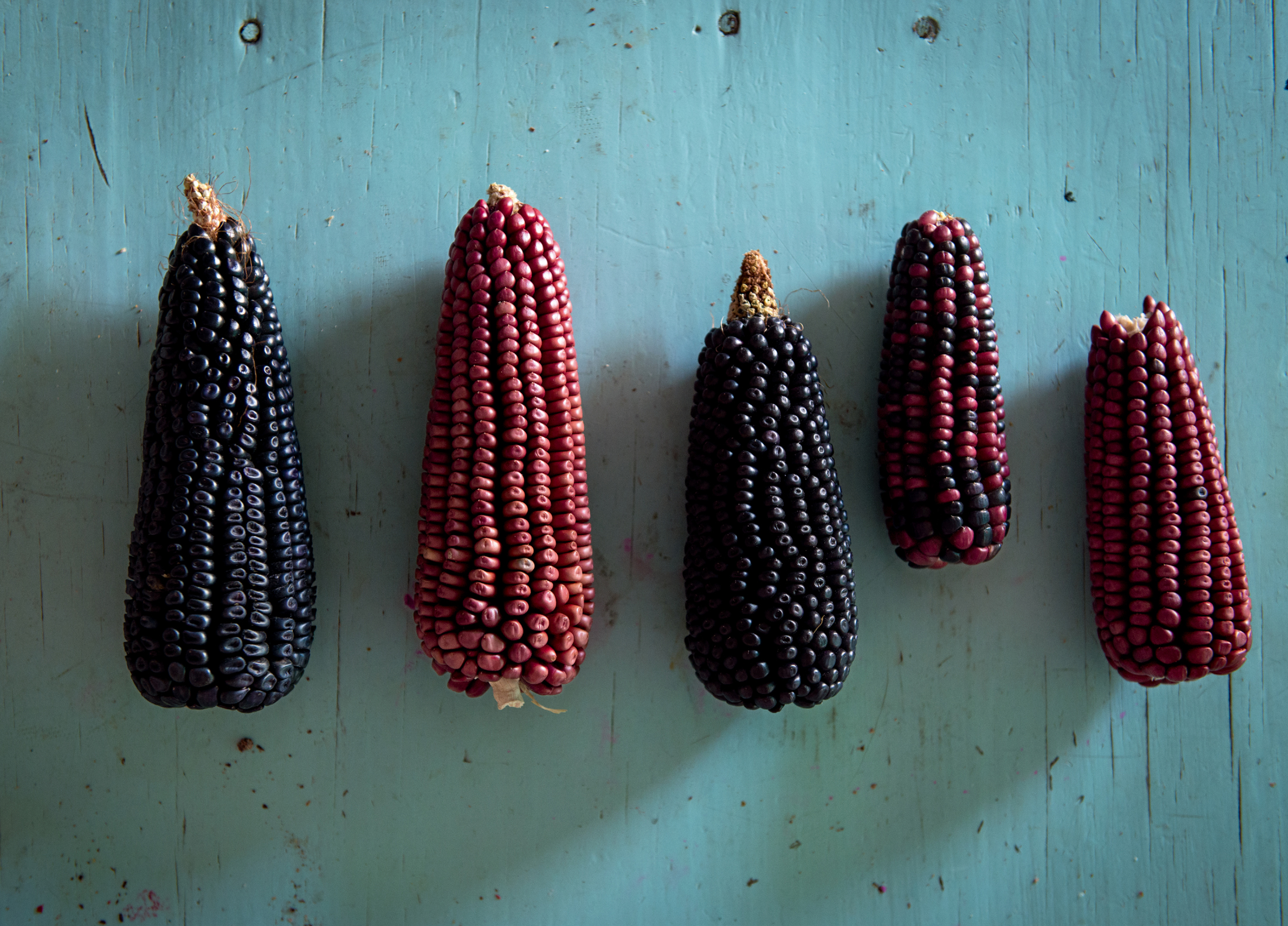
Colorful heirloom corn that will be cooked, ground into masa, and patted into blue-corn tortillas.
Many Citizens, One Cuisine
Some residents of Mexico City have roots there that date back generations; others have come more recently from places as far-flung as tropical Chiapas or remote villages on the Isla Guadalupe, an island off the southwest coast. Whether from a region best known for cloud forests or for cattle ranching, each resident brings his or her specific attitude to cooking and eating, influenced by both family and regional history. These myriad traditions have melded in the vast, fast-paced city to create a distinct sensibility at the table. It is a cuisine that defies easy description, yet it is recognizable to those who live there. It might have something to do with the casual adaptation of foods and techniques that come from elsewhere. Only in Mexico City, for instance, does the tamale get put on a crusty roll for a meal on the goguajolota, the citys most popular breakfast. And then there is mole poblano, a sauce made from an array of dried chiles with a flavor profile to match. It originated in Puebla, where it is the star dish. But in Mexico City, it has been incorporated into the everyday, not so much a celebratory food as a mainstay, usually slathered atop enchiladas. Notwithstanding the metropolitan flair the city brings to cooking, however, the heart of its dining experience is the family meal, cooked at home.

A few faces of Mexico City, clockwise from top left: a street musician; Super Astro, otherwise known as Juan Zesati, a professional wrestler; a waiter at Contramar; Mnica Casanova, a multidisciplinary artist; Alam Mndez Florin, the chef at Pasillo de Humo; a waitress at a restaurant that specializes in Mexican chicken stew.
Victoria Hernndez, a grandmother still stylish in her mid-sixties, stirs the bubbling stew with a wooden spoon and glances out the kitchen window.
Back in the village in Veracruz state, where she was raised, the morning stillness was broken by the crowing of roosters and the clopping of horses hooves. Here in the Mexico City neighborhood of Tepito, where she lives now, the cars are already honking, and the street teems with sellers hawking their wares. A pushcart vendor is righting a toppled stack of papayas. Under a clothesline heavy with the weeks washing, a couple of young boxers are throwing practice punches, and children have gathered to watch. The youngest girl among them spies Hernndez at the window and raises her arm in greeting. Shes one of the seven people that call the three-room apartment home.
Hernndez waves back at the girl, making her smile, then places a few pasilla chiles onto the hot comal, a circular grill. Since antiquity, chiles have been a fundamental component in Mexican cuisine. They are used not only as a condiment but also as a primary ingredient, and a recipe often contains more than one variety. Indeed, the meal that Hernndez is making today calls for two types of dried chile: The pasilla, with its glossy, crinkled skin, contributes an earthy flavor and a mild heat to dishes. The ancho, known as a poblano when fresh, is sweeter and adds a vibrant red hue. Ground into a paste, they will fortify the mole de olla, a rich stew made of bone-in pork and chunks of corn on the cob, zucchini, carrots, chayote, and potatoes.
Tepito has been crowded with itinerant street markets for nearly seven hundred years. The neighborhood has had a reputation for being a rough and lawless place since the Aztec era, and in that regard, little has changed. But while Hernndez has lived here for five decades, shes proud to bring the quietness and simplicity of her Veracruz upbringing to her cooking style. The chiles toasting on the comal pop and release their sharp, smoky fragrance into the air. In a blue enamel stockpot, the pork is getting tender. She places the toasted chiles into hot water to soften.

